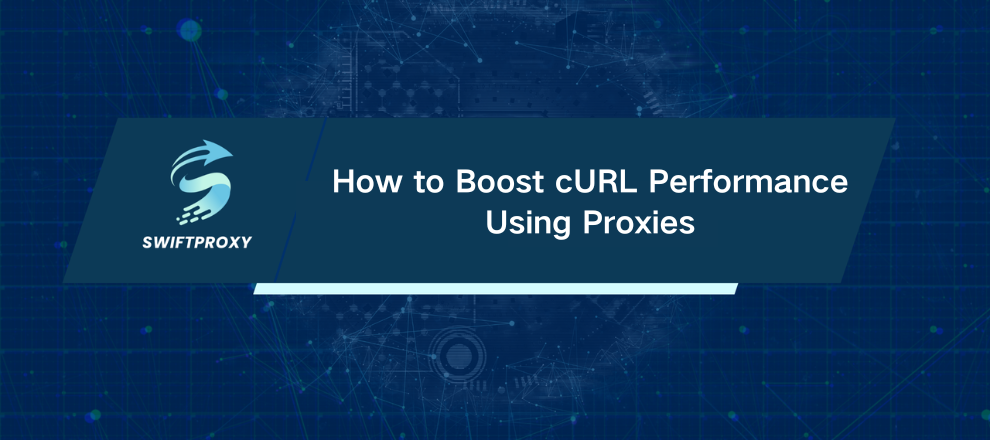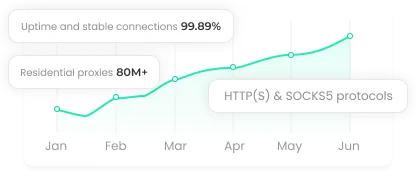How to Boost cURL Performance Using Proxies
Every second, millions of automated web requests are made across the globe. Some succeed, some fail—and some get blocked before they even finish. If you rely on cURL for scraping, automation, or API interaction, one misstep can mean lost time, throttled requests, or worse: an IP ban. The solution? Combine cURL with a proxy. It’s not just about anonymity—it’s about efficiency, speed, and staying one step ahead of server restrictions. Let’s break down how to make this work for you.

Introduction to cURL
cURL is the Swiss Army knife of network requests. It's a command-line tool that talks HTTP, HTTPS, FTP—you name it. You can grab web pages, push files, interact with APIs, and automate almost anything network-related.
Its strength is flexibility. Scripts, cron jobs, or one-off requests—cURL handles them all. And it doesn't matter if you're on Windows, Linux, or macOS; integration is smooth and almost seamless.
Understanding Proxy
Think of a proxy as a middleman between you and the internet. Every request you make passes through it. Why? To mask your IP, bypass regional blocks, and maintain privacy.
Proxies shine when you're making large volumes of requests. They distribute traffic, reduce the risk of detection, and keep operations running smoothly.
Types of proxies:
Residential Proxies: Real IPs from actual homes. Harder to detect.
ISP Proxies: Provided by Internet Service Providers. Stable, fast, reliable.
Datacenter Proxies: Generated by data centers. Super fast but easier to identify.
Combine cURL with a proxy, and suddenly you're secure, efficient, and unstoppable.
Reasons to Use cURL with a Proxy
There are clear advantages:
Privacy and Security: Your real IP stays hidden. Perfect for sensitive scraping.
Bypass Restrictions: Access data blocked in specific regions.
Speed and Reliability: Spread requests across multiple proxies to prevent server overload.
Avoid IP Bans: Rotating proxies distribute requests, keeping your IP safe.
Enhanced Efficiency: Anonymity reduces anti-bot detection and allows smoother data collection.
How to Set Up cURL with a Proxy
Step 1: Install cURL
Windows: Usually bundled with Git. Check with curl --version
Linux/macOS: Pre-installed. Verify with the same command.
Step 2: Select Your Proxy Provider
Not all proxies are created equal. Look for reliability, speed, and support. Residential and ISP proxies are best for heavy tasks.
Step 3: Set Up cURL with Proxy
Specify the proxy address and port you want to use, so that cURL sends requests through this proxy. Your network requests will go through the selected proxy server, hiding your real IP and improving the security and stability of your requests.
Step 4: Add Authentication (If Required)
If your proxy requires a username and password for authentication, you need to provide these credentials to gain access. This ensures that the requests you send through the proxy are secure and authorized, preventing them from being rejected or restricted by the proxy server.
Step 5: Use Rotating Proxies for Large-Scale Requests
Rotating proxies switch IPs automatically, reducing detection risk and preventing bans. Most premium providers, including Swiftproxy, offer easy integration with cURL.
How Swiftproxy Boosts Your cURL Experience
Swiftproxy is built for professionals who scrape, automate, or interact with APIs at scale.
Residential Proxies: Real IPs, dynamic rotation, high anonymity.
ISP Proxies: Dedicated IPs for consistent, fast connections.
With Swiftproxy + cURL, you get reliability, speed, and security in one package.
Why Choose Swiftproxy
Over 70 million authentic residential IPs across 195+ countries. 99.89% success rate. 0.6-second response time. Cost-effective. Support available 24/7. Whether it's scraping, automation, or API integration, Swiftproxy ensures your operations never skip a beat.
Conclusion
Secure, efficient data requests are a necessity. Using cURL with a proxy transforms your workflow, enhancing privacy, reliability, and speed. Pair it with a trusted provider like Swiftproxy, and you're ready to handle any scale of data collection with confidence.

















































